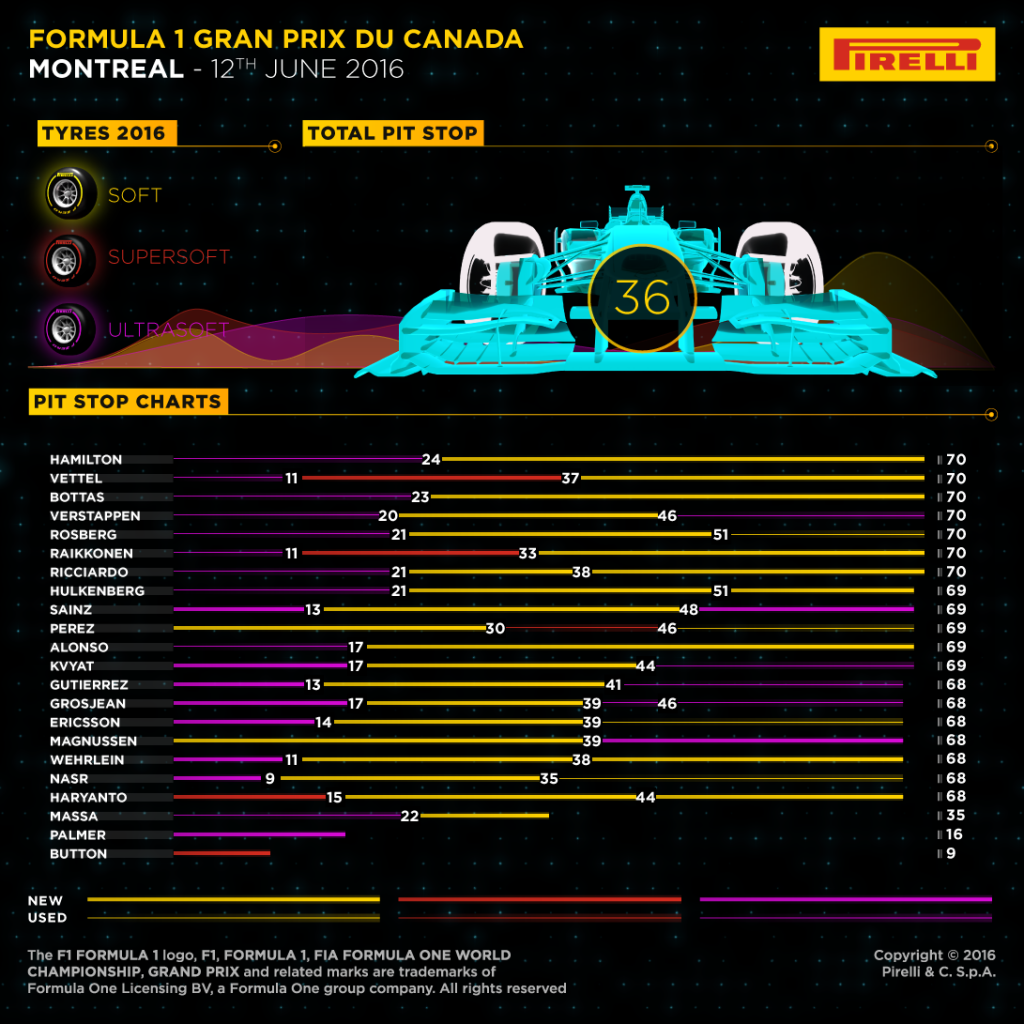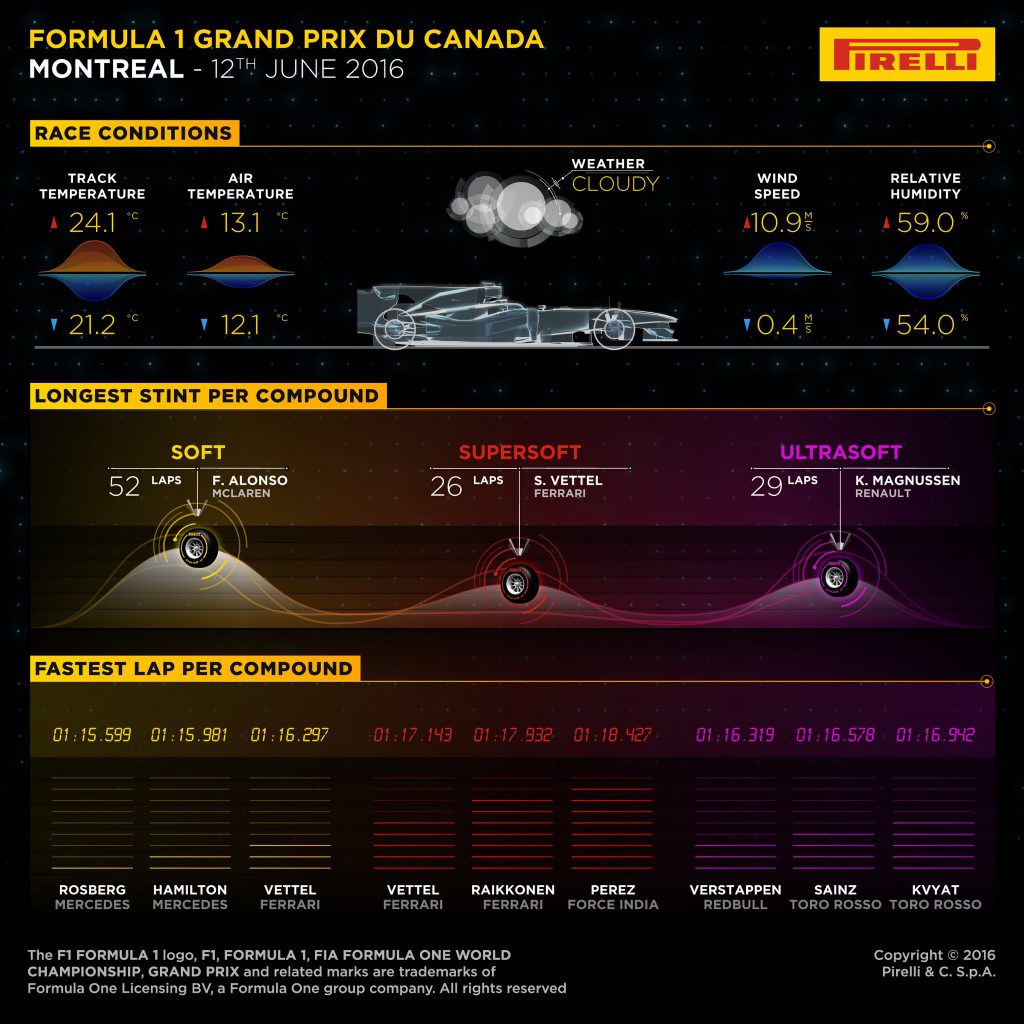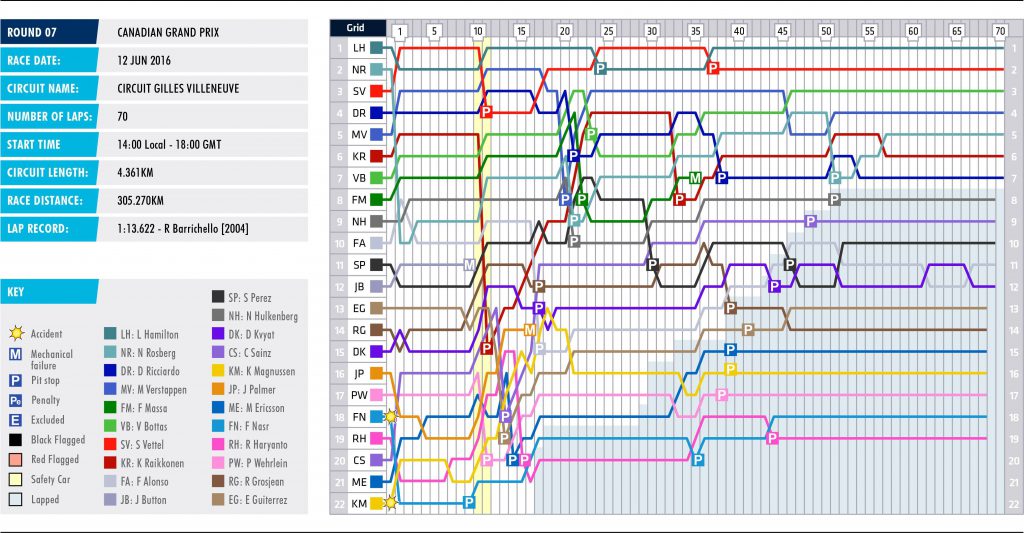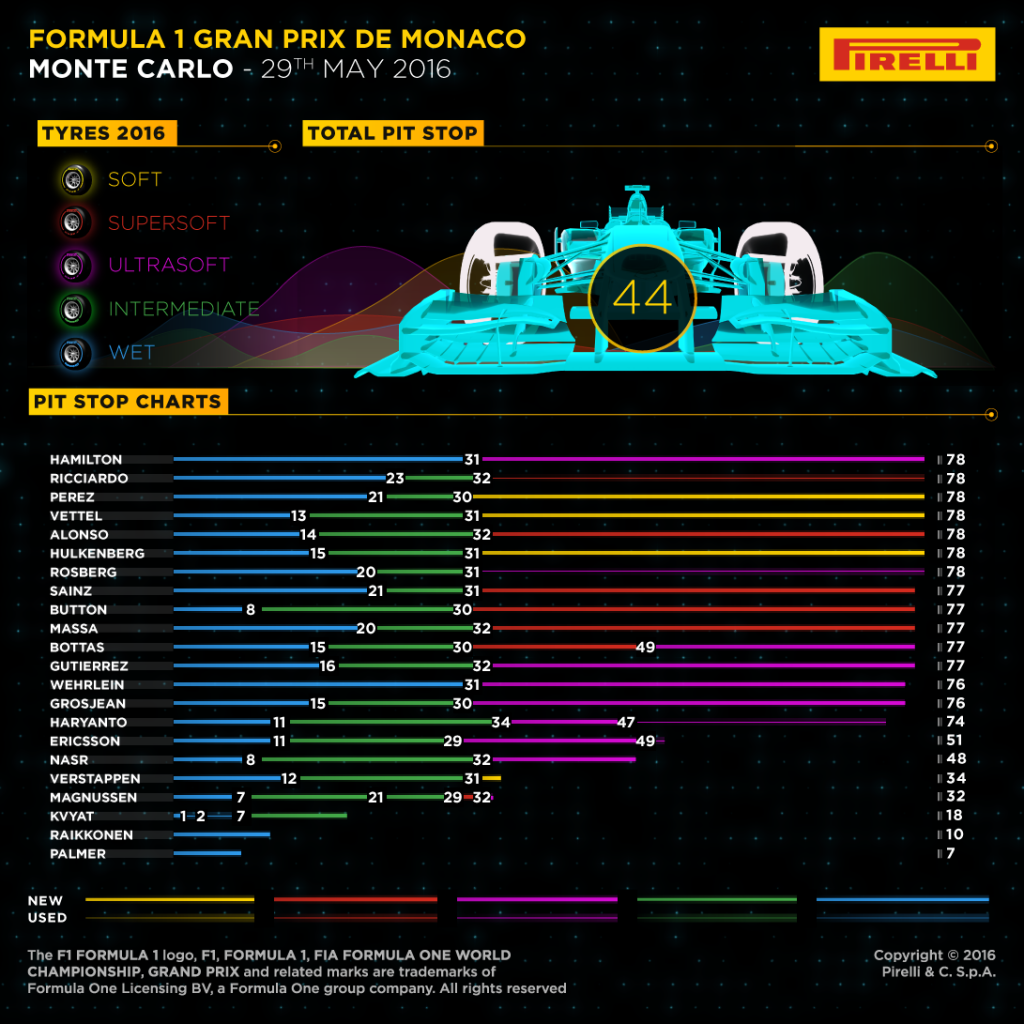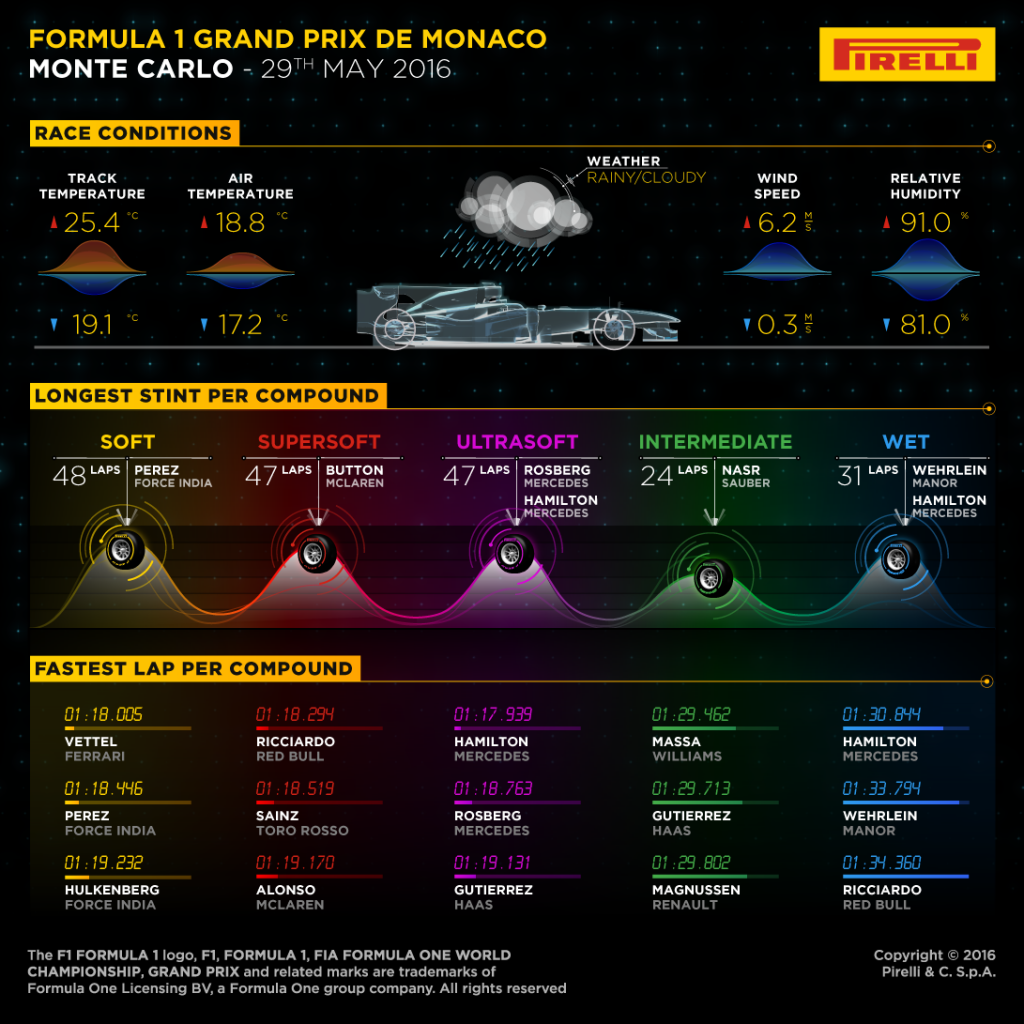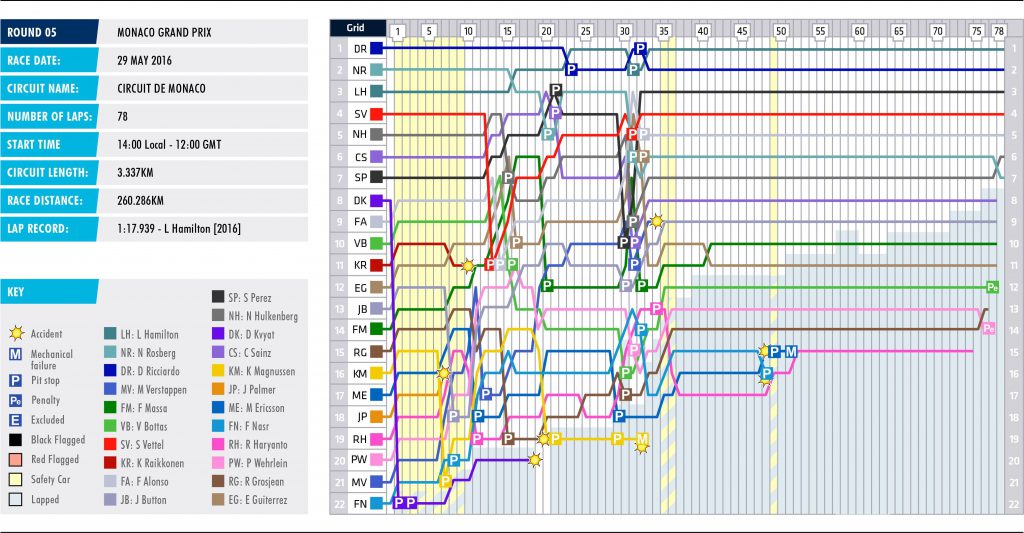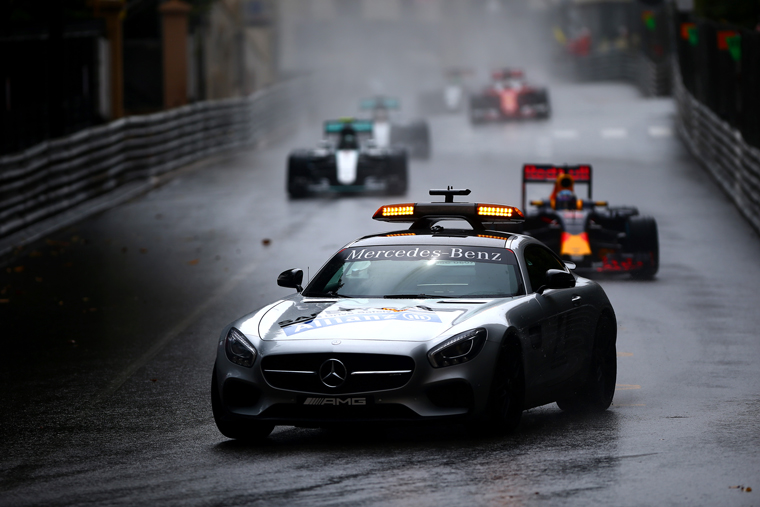European Grand Prix 2016
22 Jun 2016
Race 8 – 51 Laps – 6.003km per lap – 306.049km race distance – low tyre wear
European GP F1 Strategy Report Podcast – featuring Cheeka Eyers from the podcast For Formula One’s Sake.
With a new track hosting the returning European Grand Prix, there were plenty of exciting unknowns heading into round eight of the 2016 Formula 1 season.
The unique Baku City Circuit in Azerbaijan certainly produced a stunning backdrop and got plenty of people talking, but the race itself was pretty low-key.
Nico Rosberg stormed to a clear victory from Sebastian Vettel and Sergio Perez. But while the race wasn’t the most thrilling of the 2016 events so far, it did spark more strategy stories than we were expecting.
Baku plays to Mercedes’ strengths
The long straights of the Baku street track were always going to suit the Mercedes-powered cars, so coupled with the strong chassis of the championship leading W07, Nico Rosberg and Lewis Hamilton were always going to be tough to beat.
The mix of incredible straightline speed and brilliant poise through the corners really highlighted the Mercedes’ strength, while also showcasing the flaws of Red Bull’s Renault power unit and the downforce levels of the likes of Williams and Manor.
Ferrari changes its mind?
Early in the European GP, it looked as if Ferrari were going for a two-stop strategy. With higher temperatures and a rapidly evolving track, tyre wear and degradation rates looked a bit higher than expected. So the radio call came in around lap seven to pit Vettel but he was sceptical.
Instead Ferrari opted to stop Kimi Raikkonen early, but the Finn managed to eke out his soft tyres to the end, while Vettel was happy on the super-softs until lap 20 and easily made it to the finish with just one stop. So, it looked like the switch back to a one-stop was the right call after all.
Red Bull struggles
But while Ferrari’s car worked well on its tyres, the Red Bull cars struggled with wear and degradation, possibly due to the team using less downforce to try and compensate for the RB12’s lack of grunt on the straights.
Both Daniel Ricciardo and Max Verstappen stopped early to get rid of the super-softs, going to the softs. But while others were able to get them into the working range and extend their stints, the RBR cars chewed them up and needed to pit for a second time.
Clearly worried about getting to the end, Red Bull went for the rarely-used medium compound for the final stints, which worked quite well and meant Ricciardo and Verstappen were able to make up for the lost ground to rise up to seventh and eighth.
Strategy calls fail to work
Lewis Hamilton started down in 10th after his qualifying contact with the wall but his early progress and strong strategy with a one-stop, pitting on lap 15 to switch from super-softs to softs, looked to be good enough for a positive result.
He could well have finished ahead of Perez but starting so low down and the deployment issue he had, after a set-up problem which he radioed about frantically, meant he couldn’t make up much more ground.
Nico Hulkenberg tried something different from outside the top 10 and started on the softs but the super-soft edge in the early laps meant he lost too many places initially to really make an impact higher up the order, finishing ninth – in Perez’s shadow once again. It was the same for the other soft-tyre starters, Marcus Ericsson and Pascal Wehrlein (before the latter retired).
Meanwhile at the back, Rio Haryanto impressed to qualify 17th but a first lap pitstop for a new nose put him on a different strategy. Manor opted to see if he could get to the end on the softs and he did, which is quite an achievement. But he was well off the pace of the rest of the pack, despite the car’s more encouraging pace in practice and qualifying.
Not a two-stop race
Pirelli expected it to be a one-stop race for pretty much everyone but that didn’t prove to be the case. The higher temperatures and track evolution meant everyone was heading into the race with lots of unknowns to contend with and it proved to be too much for some.
The Red Bulls, Felipe Massa, Jenson Button, Felipe Nasr, Romain Grosjean, Jolyon Palmer, Esteban Gutierrez and Ericsson actually all stopped twice, probably due to these different conditions and the fact they spent a lot of the race in the close midfield traffic.
The one-stop proved to ultimately be the best strategy if the cars were good on their tyres and the drivers were in a fair amount of clean air. The fact that the top six cars only pitted once shows which pit option had the advantage.
Jack Leslie @JackLeslieF1
Longest Stints
Medium: Verstappen (31 laps)
Soft: Haryanto (48 laps)
Supersoft: Hulkenberg (31 laps)
Most Stops
VERSTAPPEN, RICCIARDO, ALONSO, NASR, BUTTON, ERICSSON, GROSJEAN, SAINZ, MASSA, GUTIERREZ, PALMER (2 – including drive-throughs)
All the Data
Thanks to Pirelli Motorsport for the detailed infographics
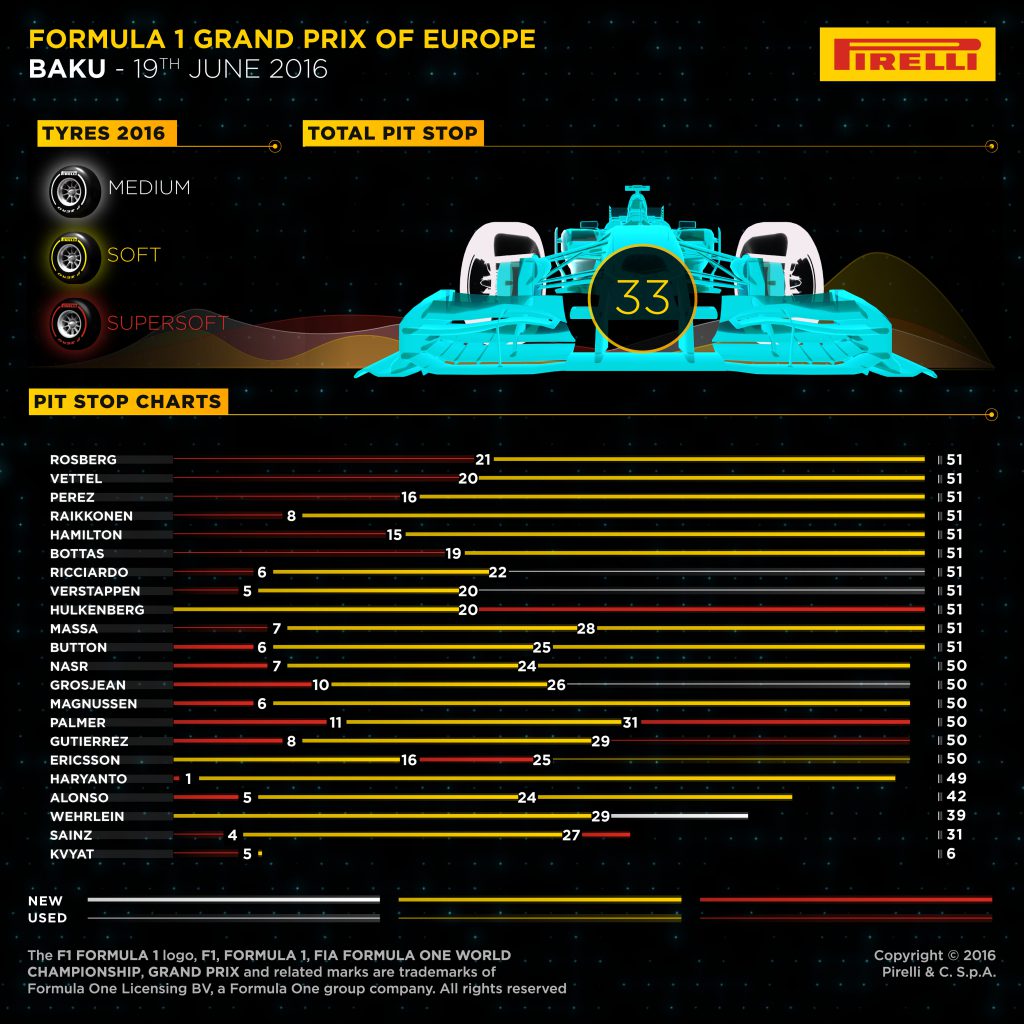
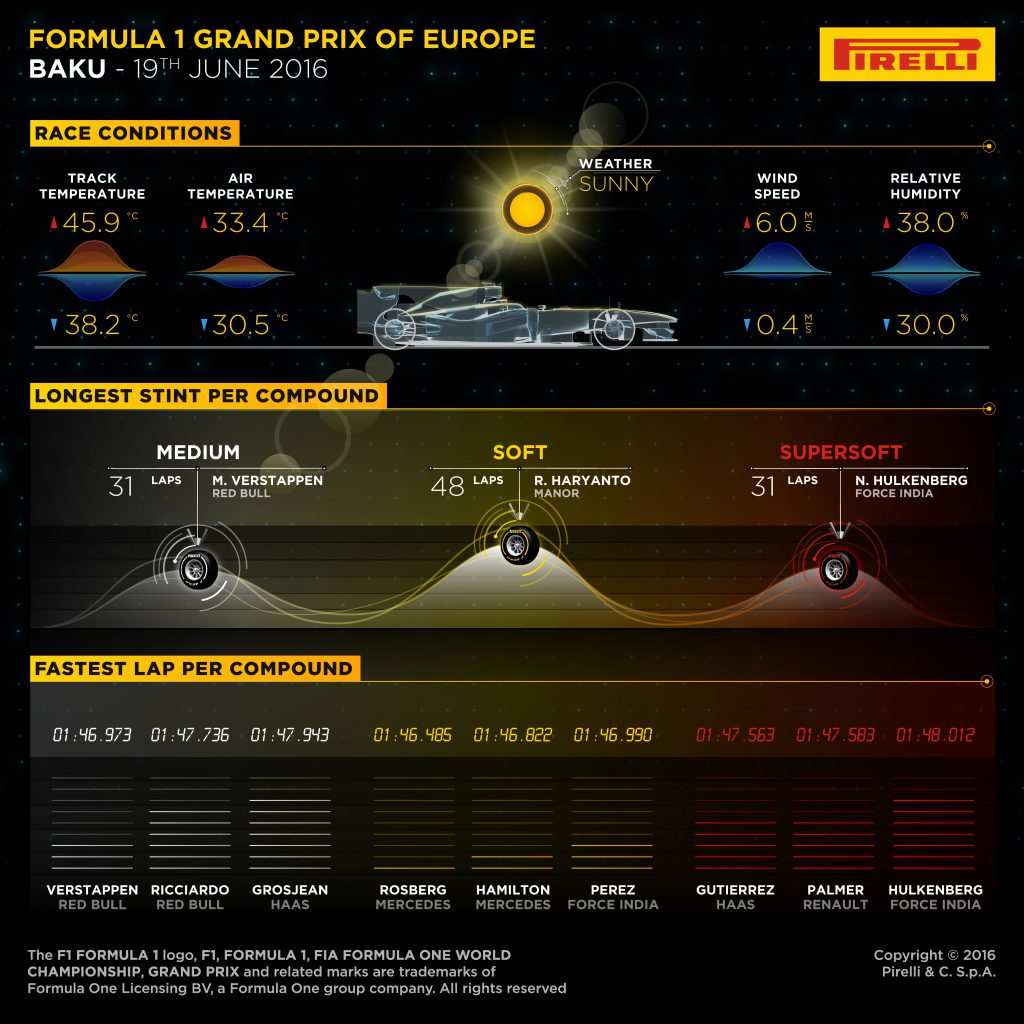
Stints by Driver
|
|
||||||||||||||||||||||||||||||||||||||||||||||||||||||||||||||||||||||||||||||||||||||||||||||||||||||||||||||||||||||||||||||||||||||||||||||||||||||||||||||||||||||||||||||||||||||||||||||||||||||||||||||||||||||||||||||||||||||||||||||||||||||||||||||||||||||||||||||||||||||||||||||||||||||||||||||||||||||||||||||||||||||||||||||||||||||||||||||||||||||||||||||
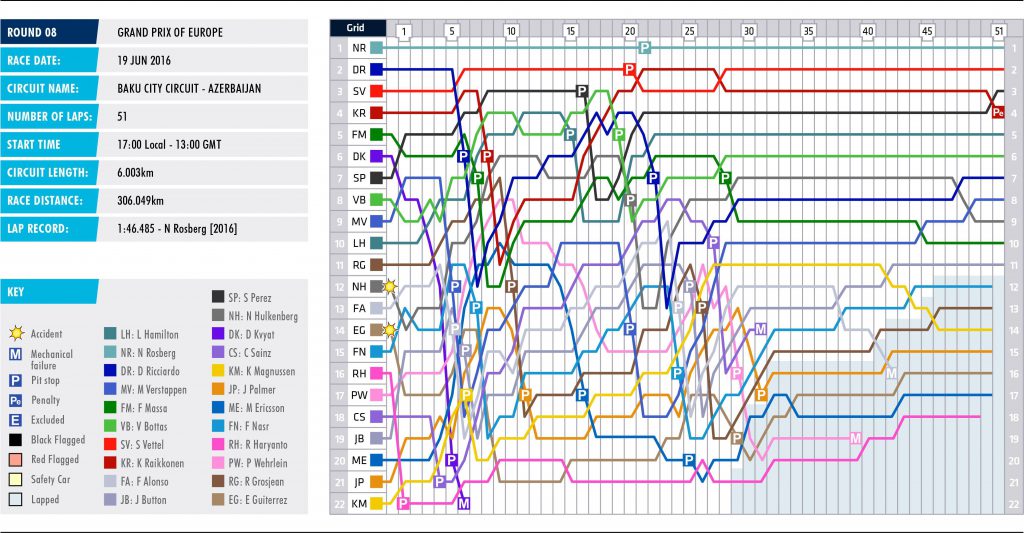
Image: BAKU, AZERBAIJAN – JUNE 19: Daniel Ricciardo of Australia driving the (3) Red Bull Racing Red Bull-TAG Heuer RB12 TAG Heuer on track during the European Formula One Grand Prix at Baku City Circuit on June 19, 2016 in Baku, Azerbaijan. (Photo by Mark Thompson/Getty Images)


 Safety Car
Safety Car 3. Ricciardo
3. Ricciardo 5. Vettel
5. Vettel 6. Rosberg
6. Rosberg 8. Grosjean
8. Grosjean 9. Ericsson
9. Ericsson 11. Perez
11. Perez 14. Alonso
14. Alonso 19. Massa
19. Massa 33. Verstappen
33. Verstappen 88. Haryanto
88. Haryanto